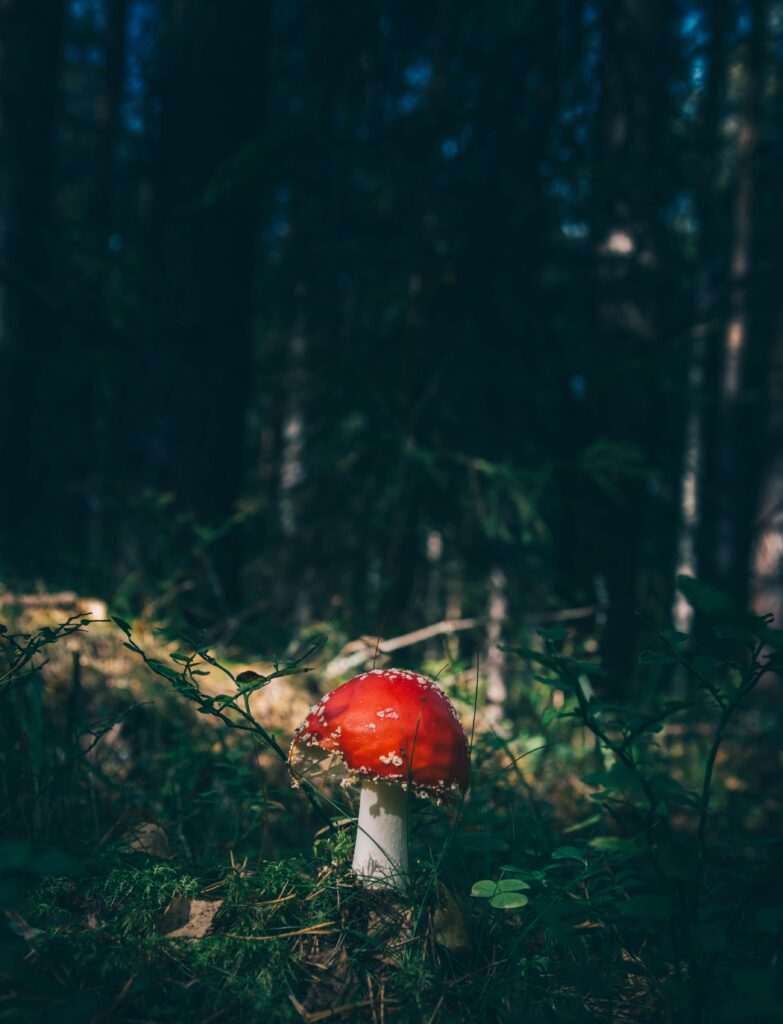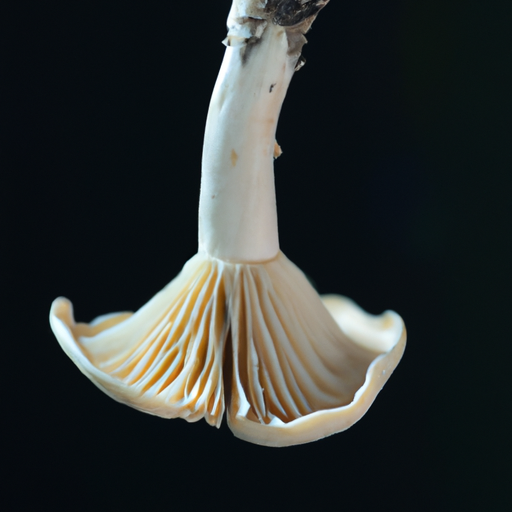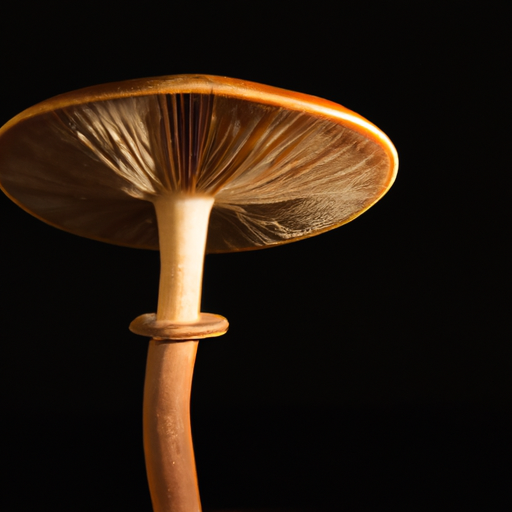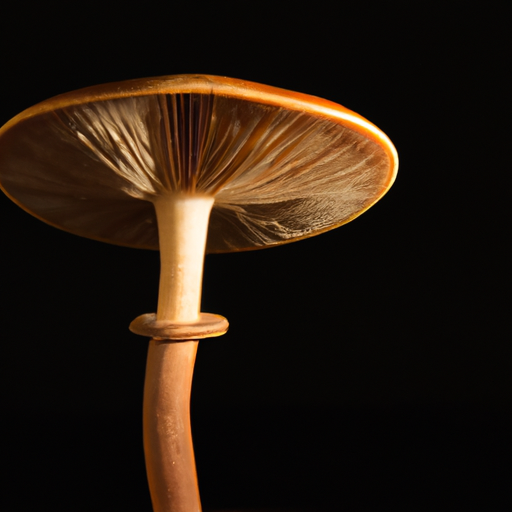Have you ever wondered about the fascinating process of mushroom growth? Well, look no further! In this article, we will explore the intriguing question: How long does it take for mushrooms to grow from spores? Delving into the mysteries of nature, we will uncover the stages and timelines involved in the remarkable transformation from a tiny spore to a fully-grown mushroom. So if you’re curious to learn about this natural wonder, let’s embark on this journey together and discover the incredible world of mushroom cultivation.

Factors Affecting Mushroom Growth
Mushroom growth is dependent on several factors, each playing a crucial role in determining the success and speed of the growth process. By understanding these factors, you can optimize the conditions and ensure optimal mushroom growth. The key factors that influence mushroom growth include the strain of mushroom, growing method, environmental conditions, and the quality of spores used in the cultivation process.
Strain of Mushroom
The strain of the mushroom directly impacts its growth characteristics and overall development. There are various strains available, each with its unique genetic makeup, growth patterns, and susceptibility to contamination. Understanding the strain you are working with is essential for creating the ideal conditions for its growth.
The genetics of the mushroom strain play a significant role in determining its growth potential. Some strains may have faster growth rates, while others may take longer to mature. Additionally, certain strains may have specific requirements or preferences for temperature, humidity, and light levels.
Another consideration is the susceptibility of the strain to contamination. While some strains may be more resilient against contaminants, others may require stricter measures to prevent contamination. Proper research into the strain of mushroom you are working with is crucial for optimizing its growth.
Growing Method
The growing method you choose greatly influences the overall growth of the mushrooms. There are several steps involved in the cultivation process, including spore germination, inoculation, spawn run, and fruiting. Each stage requires specific techniques and conditions to ensure successful growth.
Spore germination is the first step in the process where the spores of the mushroom begin to develop into mycelium. Proper temperature, moisture, nutrient availability, and lighting conditions are essential to promote successful germination.
Inoculation is the process of introducing the mycelium into a suitable substrate that provides the necessary nutrients for growth. This step requires precise preparation of both the spawn and substrate, as well as appropriate inoculation techniques.
During the spawn run, the mycelium colonizes the substrate and establishes a network of hyphae. The duration of this stage depends on various factors such as mushroom strain, temperature, humidity, and substrate quality.
Finally, fruiting is the stage when mushrooms begin to grow and develop. Adequate temperature, humidity, lighting, and air exchange are crucial for the fruiting stage. Different mushroom strains and growing methods may have specific requirements for these conditions.
Environmental Conditions
Environmental conditions play a vital role in mushroom growth and should be carefully controlled and monitored. The key environmental factors that influence mushroom growth include temperature, humidity, lighting, and air exchange.
Temperature requirements vary depending on the mushroom strain and the stage of growth. Most mushrooms prefer temperatures between 55°F and 75°F, but specific strains may have different temperature preferences. Maintaining the appropriate temperature ensures proper mycelium growth and fruiting.
Humidity also plays a significant role in mushroom growth. The ideal relative humidity for most mushrooms is between 80% and 90%. However, some species have different requirements. Adequate humidity prevents dehydration and promotes the formation of healthy mushrooms.
Lighting is another critical factor that affects mushroom growth, albeit less directly. Mushrooms do not require direct light for growth and development but do require some form of indirect light for stimulation. Lighting can help regulate their growth patterns and fruiting. Some mushrooms are more sensitive to light than others, and their specific lighting requirements should be considered.
Air exchange is essential for maintaining a proper oxygen and carbon dioxide balance, preventing the buildup of contaminants, and promoting healthy growth. Proper ventilation and the exchange of fresh air is crucial throughout the cultivation process.
Quality of Spores
The quality of spores used for mushroom cultivation can greatly influence the success of the growth process. Several factors determine the quality of spores, including the source, viability, and purity.
The source of spores is crucial, as it determines the genetic makeup of the mushrooms that will grow. Reliable and reputable sources ensure the genetic stability and quality of the spores.
Viability refers to the ability of the spores to germinate and grow. High-quality spores have high viability, ensuring a greater chance of successful growth. Spores with low viability may result in slower or unsuccessful growth.
Purity of spores is another crucial aspect. Spores should be free from contaminants that can hinder or inhibit growth. Contaminated spores can introduce unwanted fungi or bacteria, disrupting the cultivation process. Ensuring the purity of spores is essential for consistent and healthy mushroom growth.
Factors That Influence Spore Germination
Spore germination is a critical stage in mushroom cultivation, as it sets the foundation for the subsequent growth of mycelium. Several factors influence spore germination, and understanding them can facilitate the optimal growth of mushrooms.
Temperature
Temperature is a crucial factor in spore germination. Different mushroom species have different temperature requirements for successful germination. Most species prefer temperatures between 70°F and 80°F, but it is important to research the specific temperature preferences of the strain you are working with.
Moisture
Moisture is essential for spore germination. The spores require a moist environment to absorb water and activate the germination process. It is important to maintain adequate moisture levels without saturating the spores, as excessive moisture can lead to contamination.
Nutrient Availability
The availability of nutrients also impacts spore germination. The spores require nutrients from the substrate to initiate the germination process and develop into mycelium. The substrate should provide the necessary carbohydrates, proteins, and minerals for successful germination.
Lighting
Though not as critical as temperature and moisture, lighting can influence spore germination. Some mushroom species may require light exposure to trigger germination, while others may not be dependent on it. Understanding the lighting preferences of your chosen strain can help optimize germination conditions.

Spore Germination Process
The spore germination process consists of several stages, each contributing to the growth and development of mycelium.
Swelling
Upon being exposed to favorable conditions, the spores absorb water and swell. This swelling activates the spores and triggers the subsequent stages of germination.
Hypaerization
Hypaerization is the formation of germ tubes from the swollen spores. These germ tubes are the first visible signs of mycelium development. The germ tubes extend from the spores, branching out to form a network of hyphae.
Hyphal Growth
The hyphal growth occurs as the germ tubes continue to elongate and branch out, forming an intricate network of hyphae. This network is the foundation of mycelial growth and eventually gives rise to the mushrooms.

Inoculation Process
After spore germination, the next step in mushroom cultivation is the inoculation process. This stage involves introducing the developed mycelium into a suitable substrate for further growth.
Spawn Preparation
Spawn preparation includes the cultivation and propagation of pure mycelium. The mycelium is grown on a substrate known as spawn, which serves as the inoculation material. Spawn can be prepared utilizing various techniques such as grain or agar cultures.
Substrate Preparation
The substrate preparation involves creating a nutrient-rich medium for mycelium growth. Different types of substrates can be used, including straw, wood chips, or composted materials. The substrate is prepared by sterilization or pasteurization to eliminate potential contaminants.
Inoculation Techniques
Inoculation techniques involve introducing the spawn into the prepared substrate. This can be done through methods such as direct inoculation, grain spawn transfer, or spawn-infused plugs. Proper technique and hygiene must be maintained to minimize the risk of contamination.

Spawn Run
The spawn run is a critical stage in mushroom growth that involves the colonization of the substrate by the mycelium.
Colonization of Substrate
During the spawn run, the mycelium grows and establishes itself within the substrate. The mycelium extends its network of hyphae, breaking down complex organic matter and absorbing nutrients.
Temperature and Humidity Requirements
The spawn run stage requires specific temperature and humidity conditions for optimal mycelial growth. Most mushroom species prefer temperatures between 75°F and 85°F during this stage. Humidity levels should be maintained between 80% and 90% to prevent dehydration of the mycelium.
Duration of Spawn Run
The duration of the spawn run varies depending on several factors, including the mushroom strain, substrate type, and environmental conditions. It can take anywhere from a few days to several weeks for the mycelium to colonize the substrate fully.

Overall Duration of Mushroom Growth
The overall duration of mushroom growth can vary significantly, depending on multiple factors.
Varies by Mushroom Strain
Different mushroom strains have varying growth rates and development patterns. Some strains may take a relatively short time to reach maturity, while others may require longer periods. It is essential to research the specific strain you are working with to determine its expected growth duration.
Varies by Growing Method
The chosen growing method can also affect the overall duration of mushroom growth. Substrate types, inoculation techniques, and other cultivation practices may influence the time it takes for mushrooms to grow. Each growing method has its unique timeline and considerations.
Varies by Environmental Conditions
Environmental conditions, such as temperature, humidity, lighting, and air exchange, influence the growth rate of mushrooms. Optimal conditions can accelerate growth, while unfavorable conditions may lead to slower development. Carefully monitoring and controlling these conditions can help ensure timely growth.
Can Range from Weeks to Months
The duration of mushroom growth can range from weeks to months, depending on the various factors mentioned above. Some fast-growing varieties may produce mushrooms within a few weeks, while others may require several months to reach maturity. Patience and proper management are crucial throughout the process.
In conclusion, several factors influence the growth of mushrooms from spores. Understanding the strain of mushroom, choosing the appropriate growing method, maintaining optimal environmental conditions, and using high-quality spores are essential for successful cultivation. By carefully considering and managing these factors, you can optimize and expedite the mushroom growth process.


No Responses